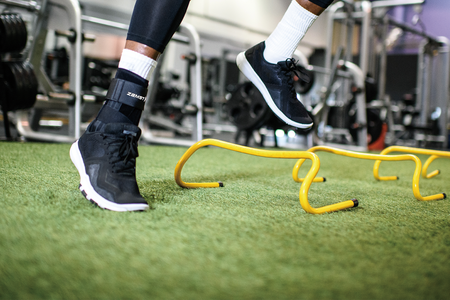Salter Harris Type II Fracture
Salter-Harris Fractures occur when the epiphyseal plate, commonly known as a growth plate, fractures. Typically these fractures occur in children ages 10-15, this is when there is a lot of activity of the growth plate as well as the typical age when children are introduced to competitive sports. Salter Harris fractures can occur in any bone with an active growth plate; but most commonly occurs in fingers, forearms or bones of the lower leg. There are 5 predominant types of Salter-Harris fractures but ~75% consist of type II, which is good news as this type has great outcomes.
- Causes
- Salter Harris Fractures can occur via acute trauma or chronic/repetitive stress on the bone. One common example is little league elbow which occurs with repetitive throwing resulting in a growth plate fracture in either the radius or humerus bone in the elbow. Another example is a growth plate fracture in the tibia. This typically occurs after traumatic force is applied to the bone from jumping or cutting, which is necessary in sports like soccer, basketball and football. Acute fractures are difficult to prevent but injuries such as little league elbow caused by repetitive stress can be prevented by developing an appropriate pitch count and age- specific progressions for various types of pitches.
Recovery
Recovery differs significantly based on the size of the bone injured and the severity of the fracture itself. On average, a typical fracture can heal in 6-8 weeks. There is one exception to this average which is the Salter-Harris fractures. Growth plates can heal at an expedited rate due to their developmental nature and increased osteoblasts (bone cells) activity. Again, it depends on the severity and type of the fracture, size of the bone and other factors including general health; but type II Salter-Harris fracture can heal as fast as 3-4 weeks.
Treatment
It is crucial for optimal healing to see your doctor immediately following the injury. This is important for several reasons but considering the different types of the fractures along with other complications, it is common to require a cast or even internal fixation of the bone. After the fracture has been identified the doctor will determine time required in the cast and when physical therapy is appropriate. Physical therapy will focus on facilitating the healing process, restoring full range of motion in the specific joint and returning strength of the surrounding muscles to the previous state. Many of these fractures can be prevented from postural strengthening and correcting specific mechanics that are demanded by the child’s sport. Other adjustments can be made including: pitching counts, time in play or use of a temporary brace for support during the recovery process.
Patrick Everett, PT, DPT, MSAT
ProSport Physical Therapy & Performance
2777 Bristol Street, Suite B Costa Mesa, CA 92626
References
1. Carbone, M., & Boero, S. (2002). Injuries to the Distal Tibial Epiphyseal Growth Plate: Classification, Treatment and Prognosis. Fractures of the Tibial Pilon, 37-46







